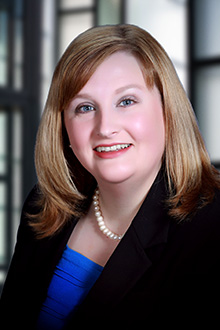P&I Policy Does Not Cover Jones Act Seaman’s Land-Based Accident
Case: Naquin v. Elevating Boats, L.L.C.
Federal Fifth Circuit Court of Appeals
817 F.3d 235 (5th Cir. 2016)
Larry Naquin was using an EBI land-based crane to relocate a test block when the pedestal of the crane snapped, causing the crane to topple over. Naquin sustained a broken left foot, a severely broken right foot, and a lower abdominal hernia when he jumped from the crane house. Naquin subsequently sued EBI pursuant to the Jones Act, and the suit proceeded to trial.
The jury concluded that Naquin was a Jones Act seaman and that EBI's negligence caused his injury, as a result of which Naquin was awarded $1,000,000 for past and future physical pain and suffering, $1,000,000 for past and future mental pain and suffering, and $400,000 for future lost wages. EBI appealed, challenging, among other things, the grant of Jones Act seaman status to Naquin and the sufficiency of evidence to establish EBI's negligence.
In the first appeal, the Fifth Circuit affirmed the jury’s verdict as to liability, concluding that the jury correctly determined that Naquin qualified as a Jones Act seaman. The Court also agreed that EBI acted negligently in failing to provide a reasonably safe work environment and work equipment, finding EBI was the only party responsible for welding crane to its base, which weld which was defective and the direct cause of Naquin’s injuries. The Court, however, vacated the verdict as it related to damages and remanded the matter to the district court to conduct a new trial on that specific issue.
On remand, the district court allowed EBI to file a third-party complaint against it P&I Insurer, SNIC, among others. EBI maintained SNIC breached its insurance contract by failing to defend and indemnify EBI against the Naquin suit. EBI also sought recovery of statutory bad faith damages.
SNIC moved for summary judgment, maintaining EBI was not entitled to coverage under the P&I Policy because coverage did not extend to Naquin’s land-based incident and that EBI failed to comply with the notice requirements imposed by the Policy. The district court granted SNIC’s motion.
On appeal, the Fifth Circuit first noted the Insuring Agreement of the P&I Policy provided:
Subject to all exclusions and other terms of this Policy, the Underwriters agree to indemnify the Assured for any sums which the Assured, as owner of the Vessel, shall have become liable to pay, and shall have paid in respect of any casualty or occurrence during the currency of the Policy, but only in consequence of any other matters set forth hereunder . . .
SNIC argued that the terms of the P&I Policy—specifically, the “as owner of the Vessel” limitation—did not provide coverage for the land-based incident due to EBI’s negligence. EBI, on the other hand, urged a blanket reading of the P&I Policy that would provide coverage for “any casualty or occurrence” for which EBI might become liable.
The Court held EBI's strained interpretation of the Policy was unreasonable. In finding the scope of coverage of the P&I Policy did not extend to EBI’s liability for the Naquin accident, the Court reasoned, “the only way to give meaning to both provisions of the Policy is to construe the Policy as limiting coverage to ‘any casualty or occurrence’ which arises out of EBI's conduct ‘as owner of the Vessel.’”
In addition, looking to factually similar cases, the Court noted there must be at least some causal operational relation between the vessel and the resulting injury. Here, the Court found Naquin’s incident in no way arose out of EBI's conduct “as owner of the Vessel.” The land-based crane did not break on or even in close proximity to a vessel. Thus, the Court rejected EBI's attempts to craft a causal connection to a vessel. Furthermore, the Court reiterated, where there is no causal operational relation between the vessel and the resulting injury, there is no extension of coverage for liability under a P&I Policy.
